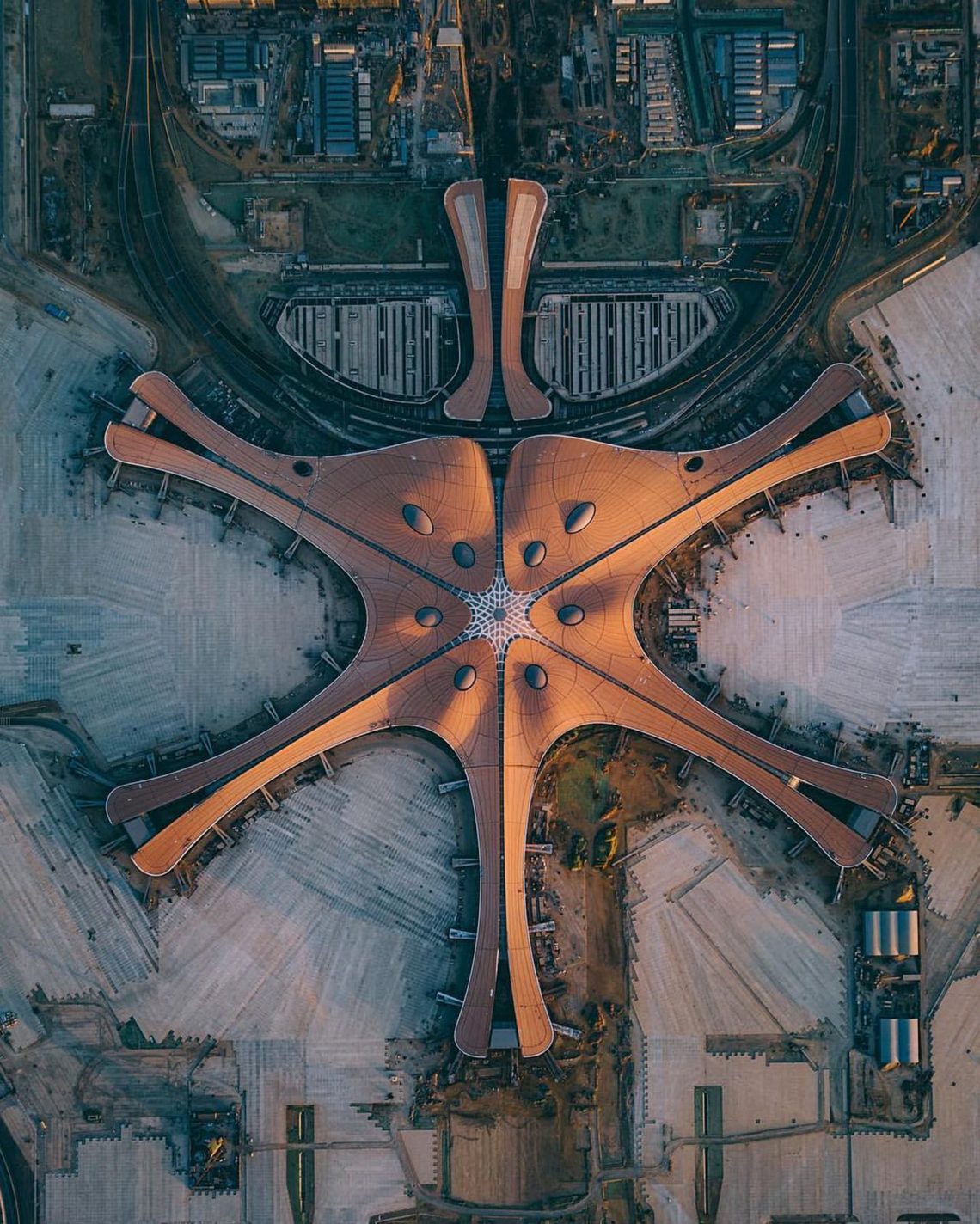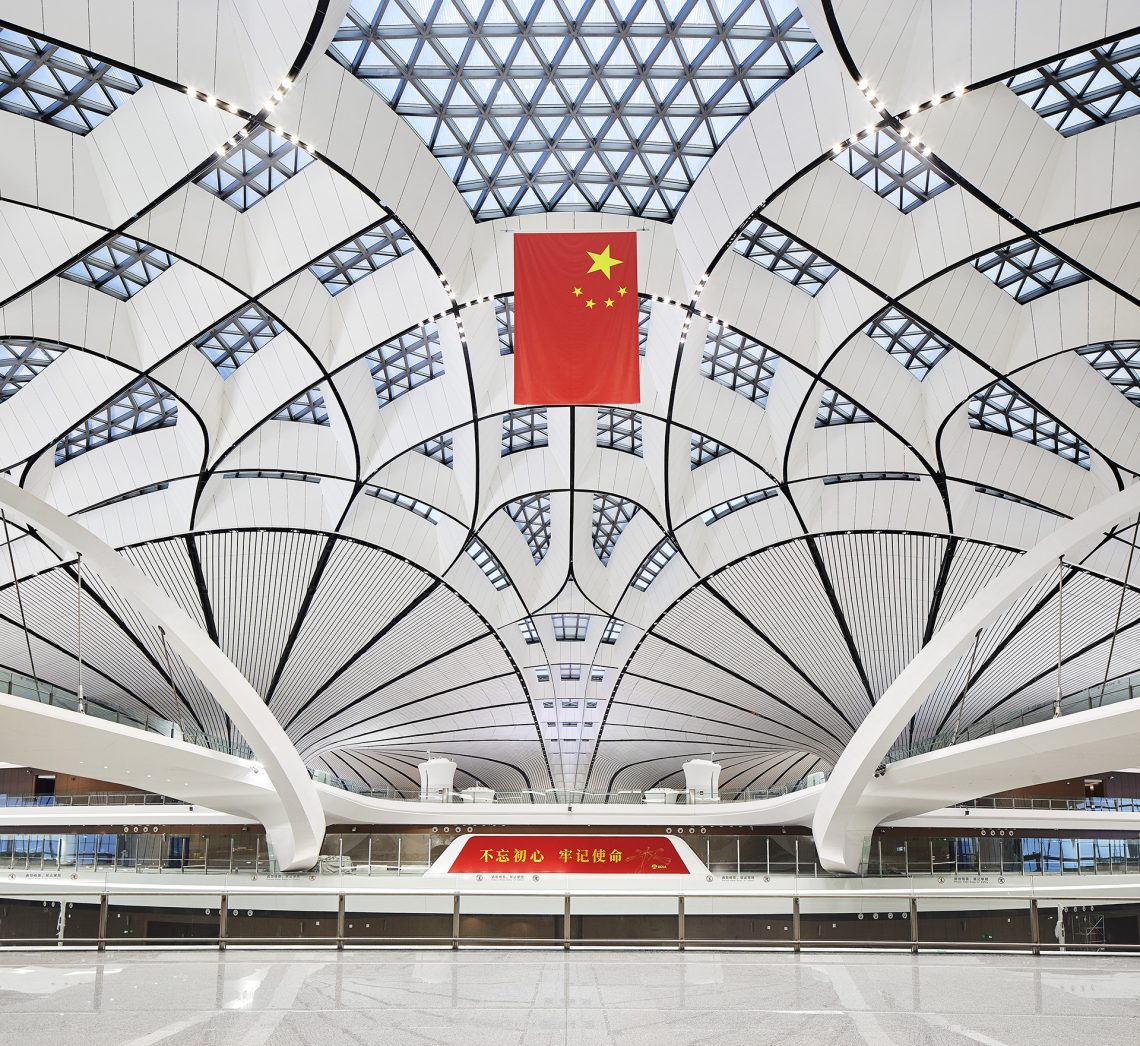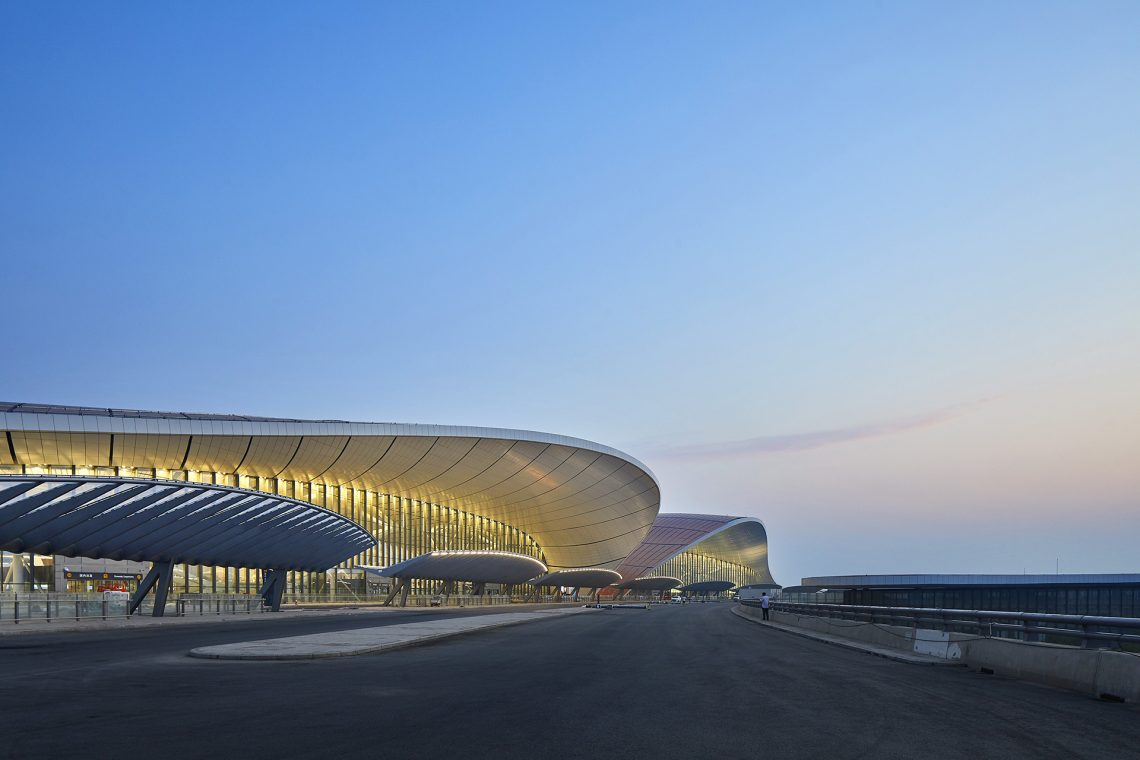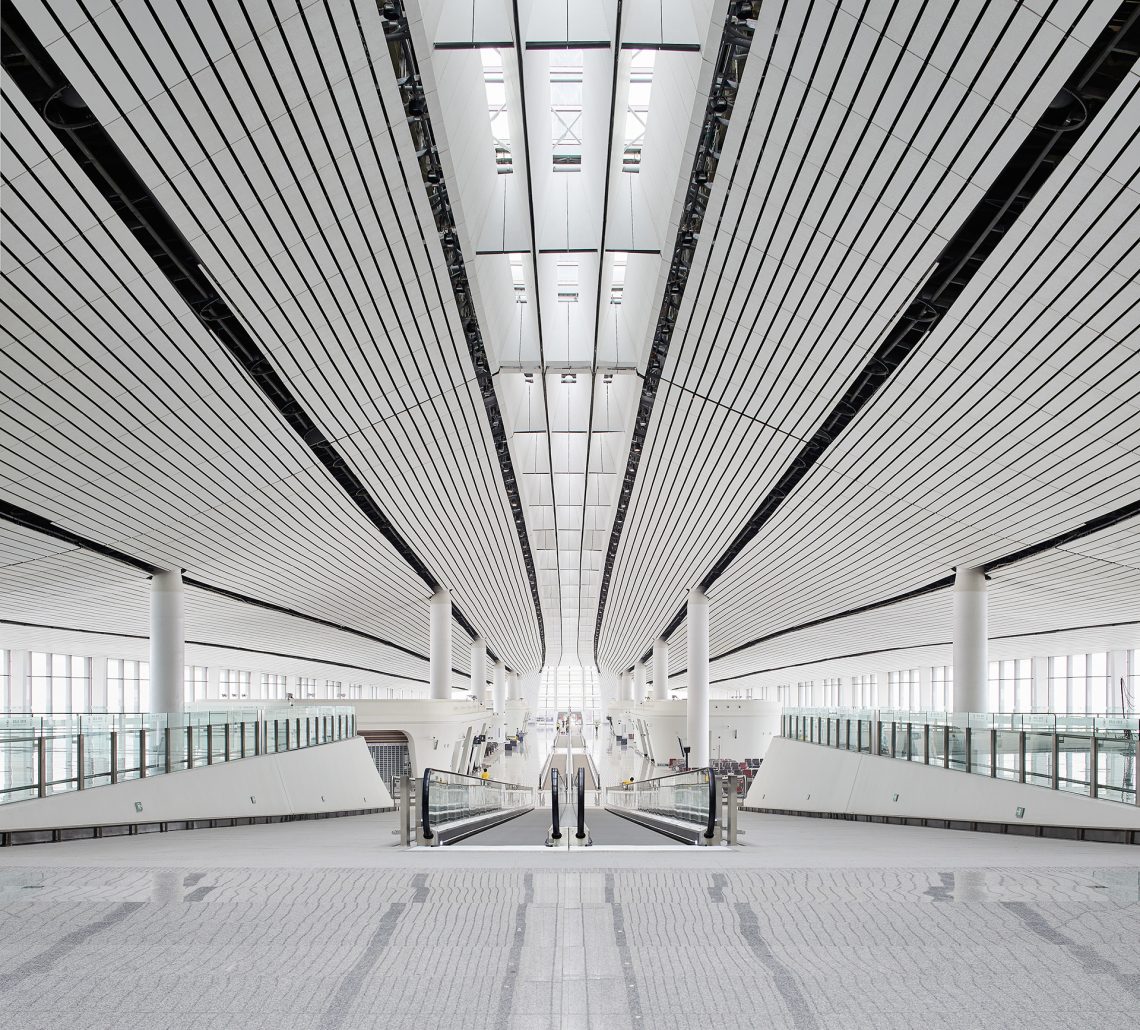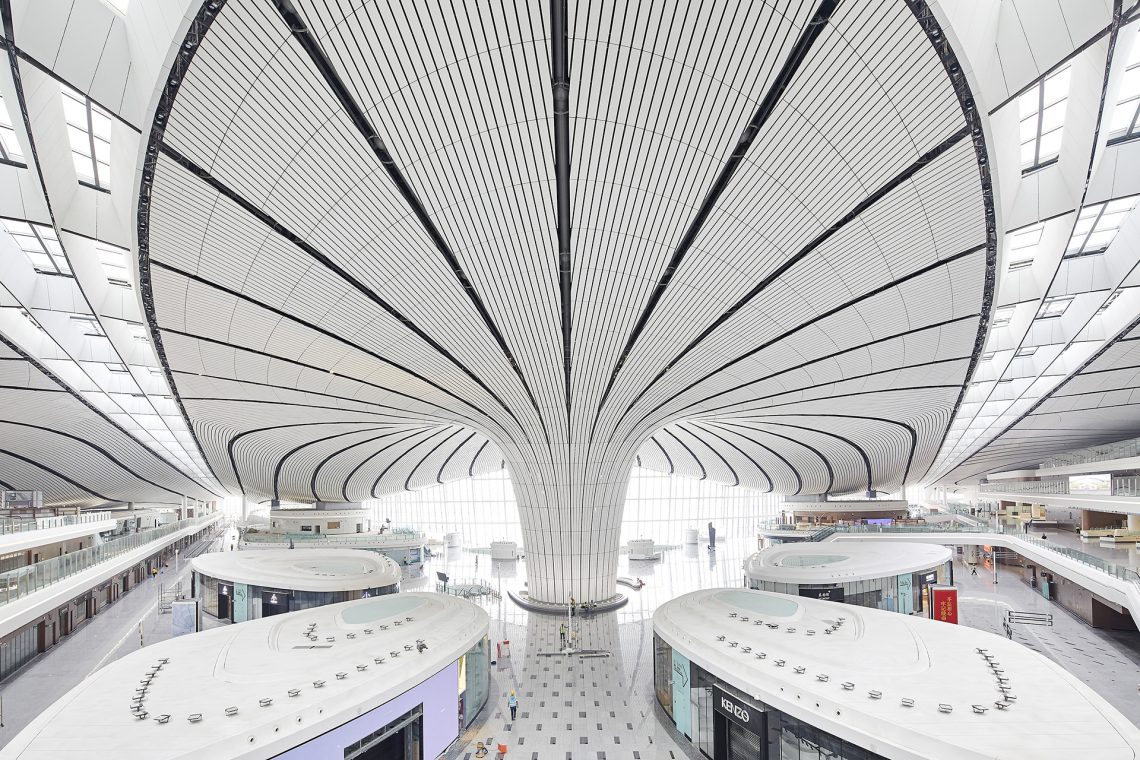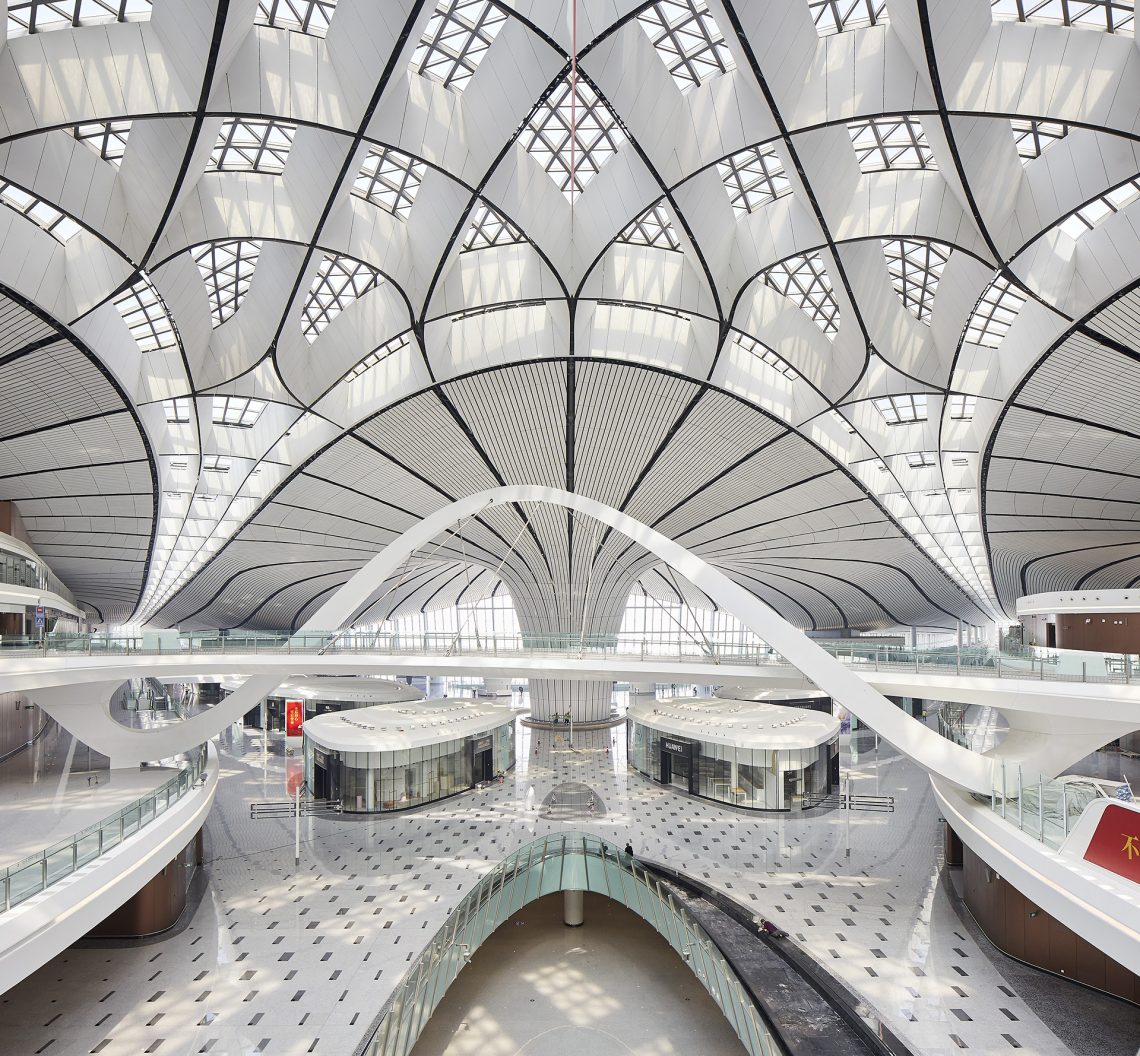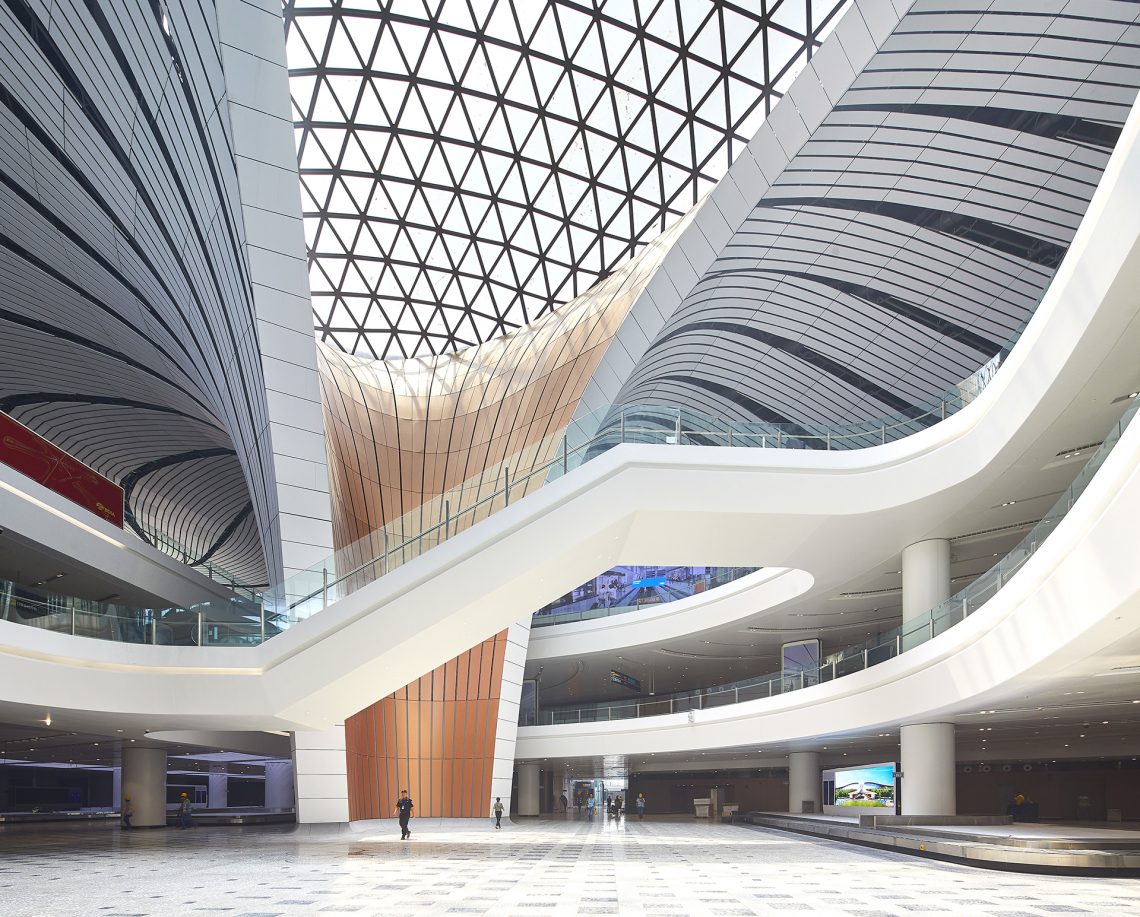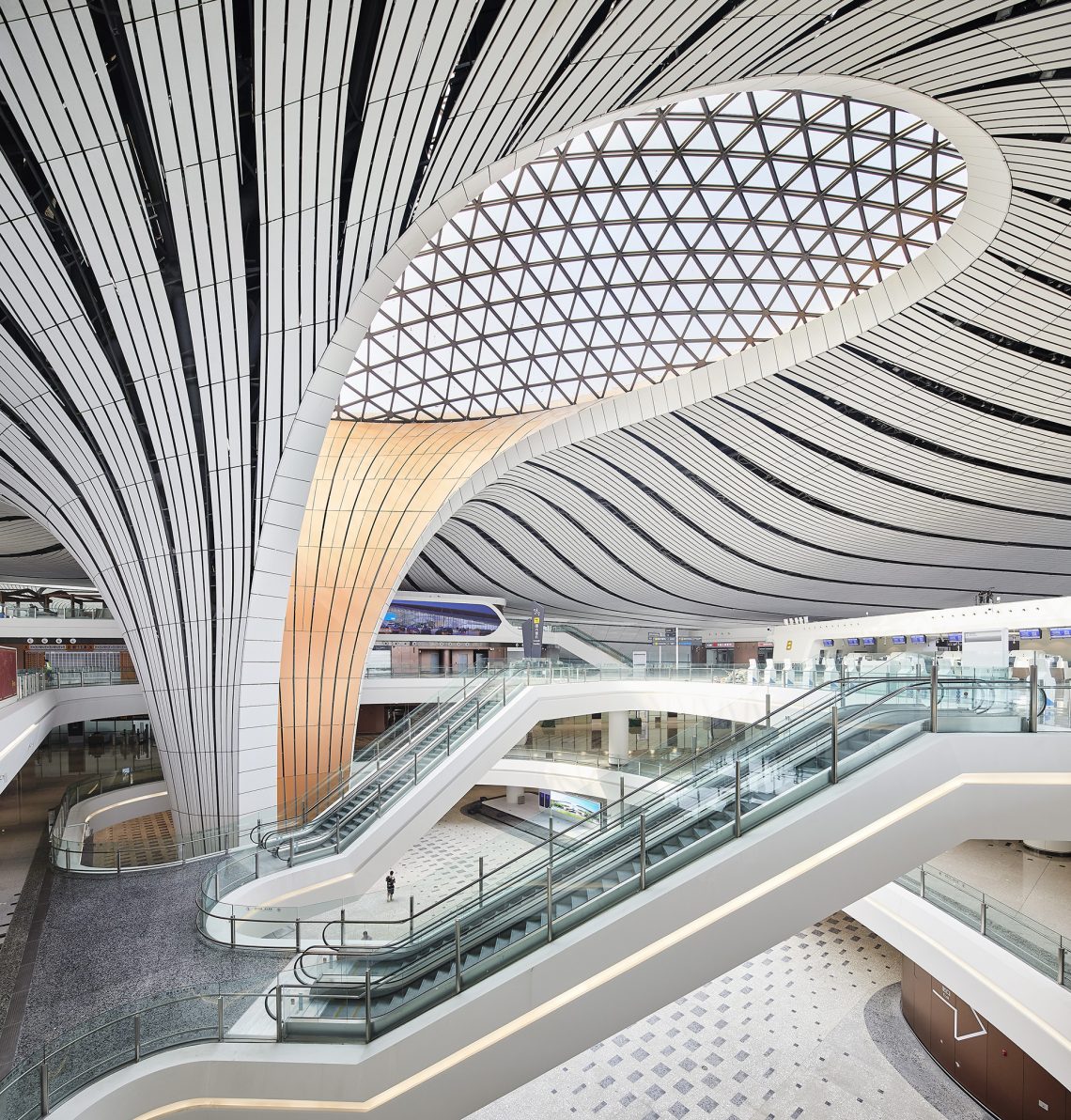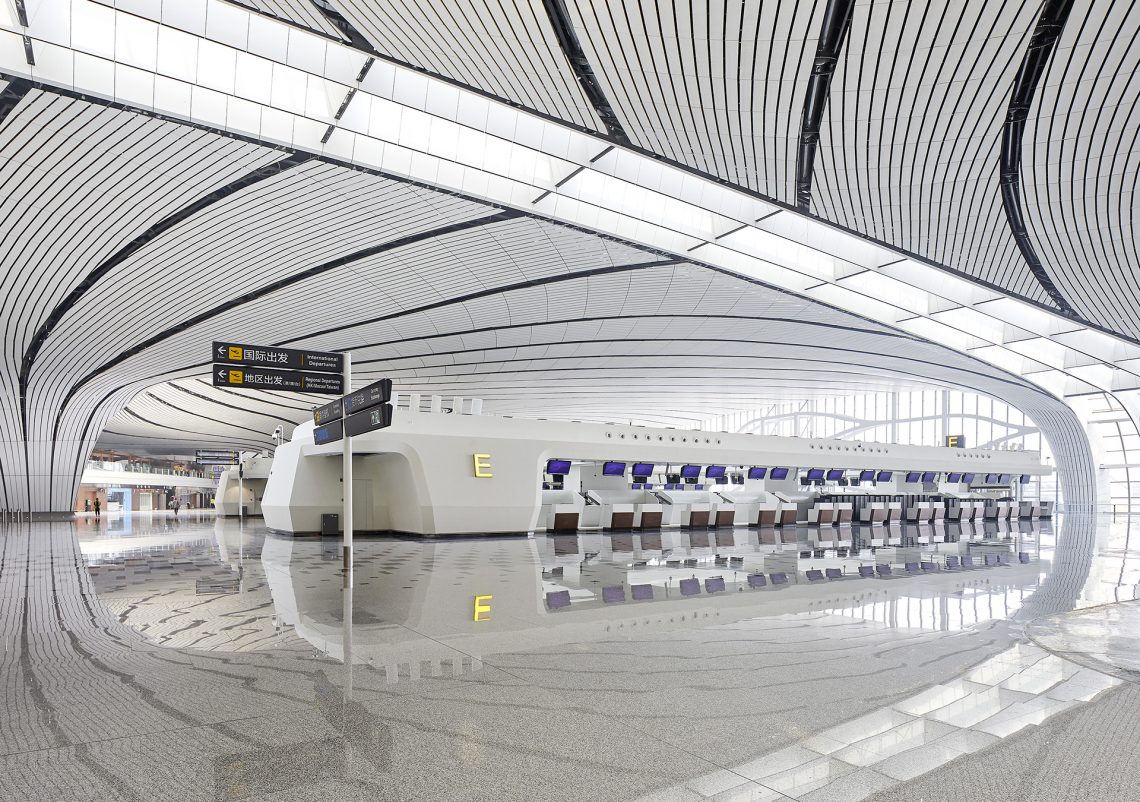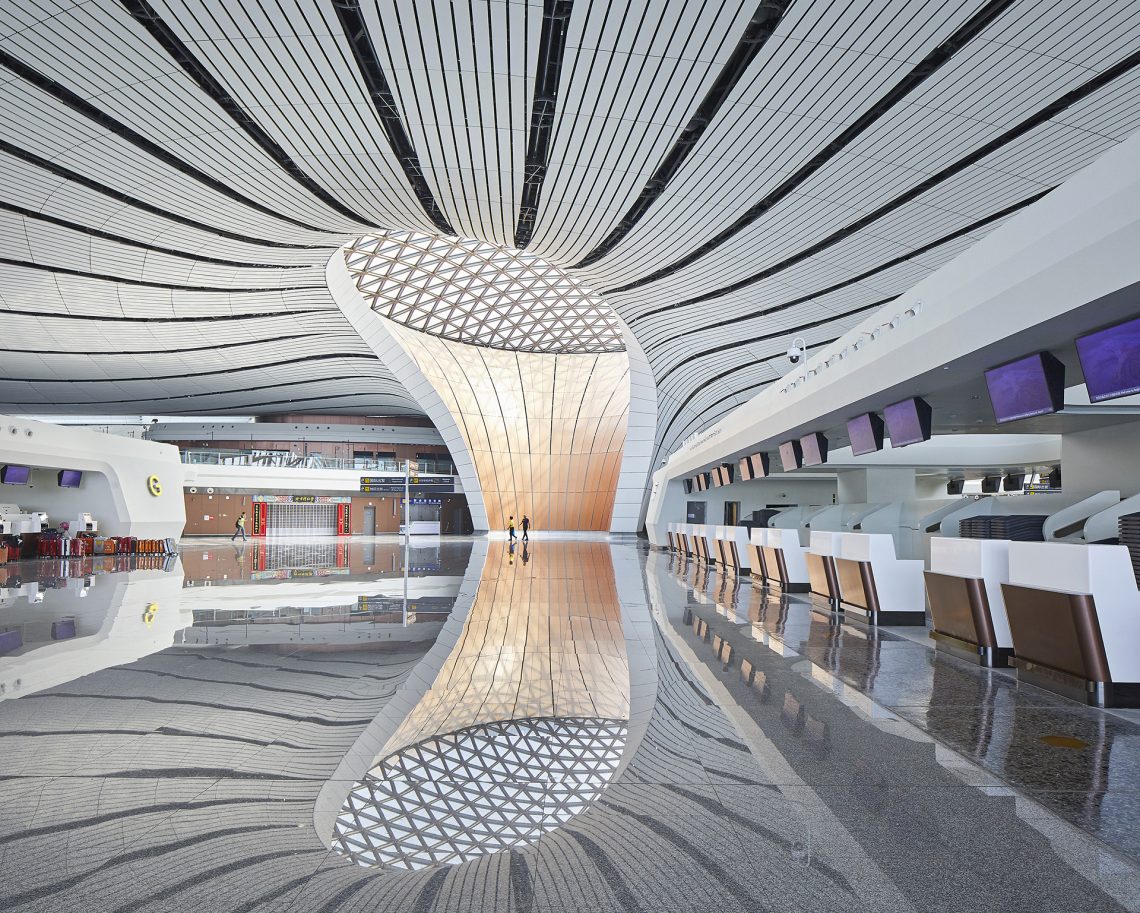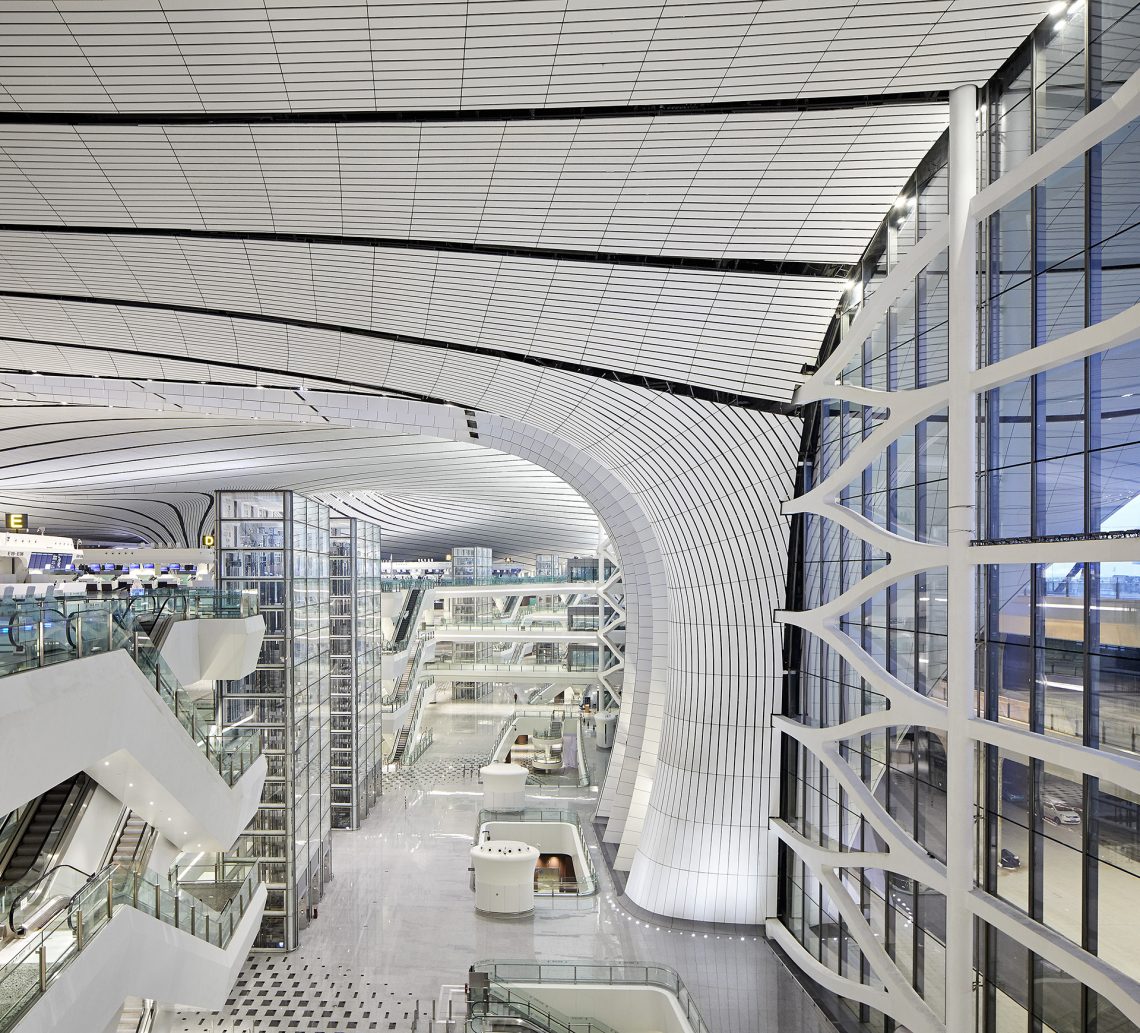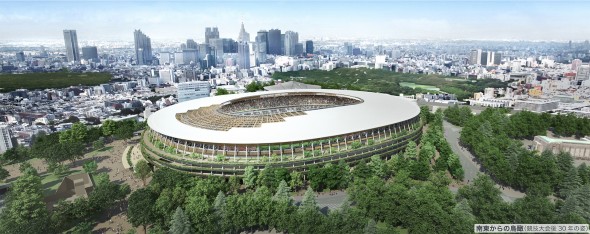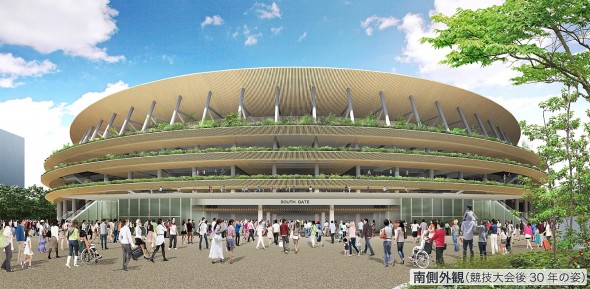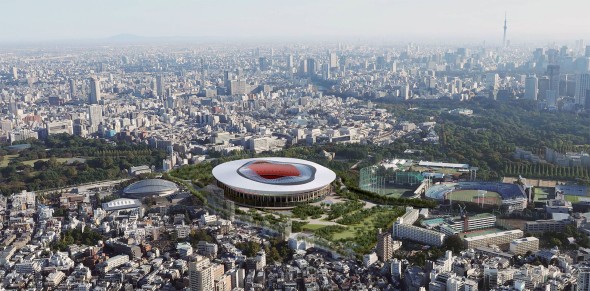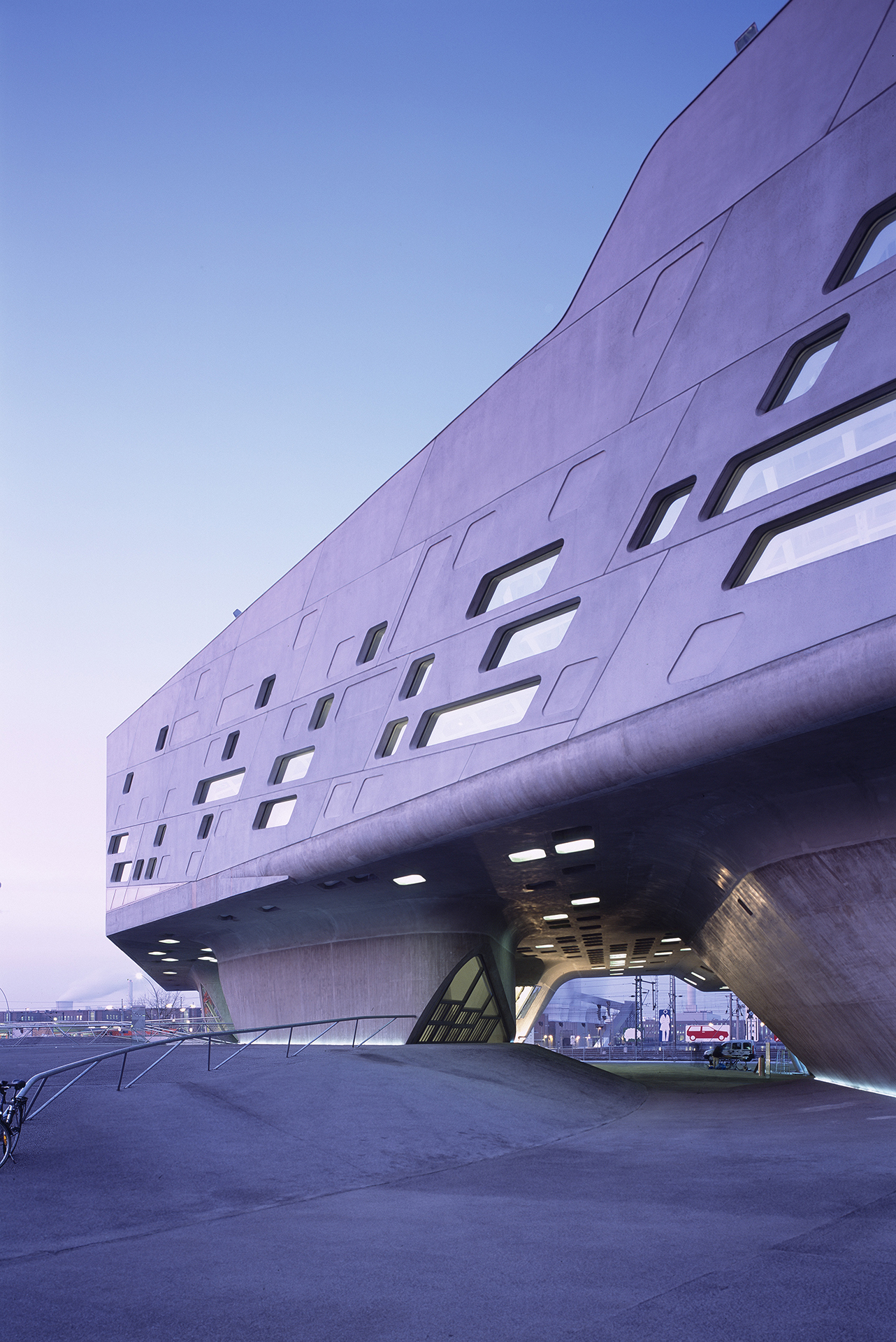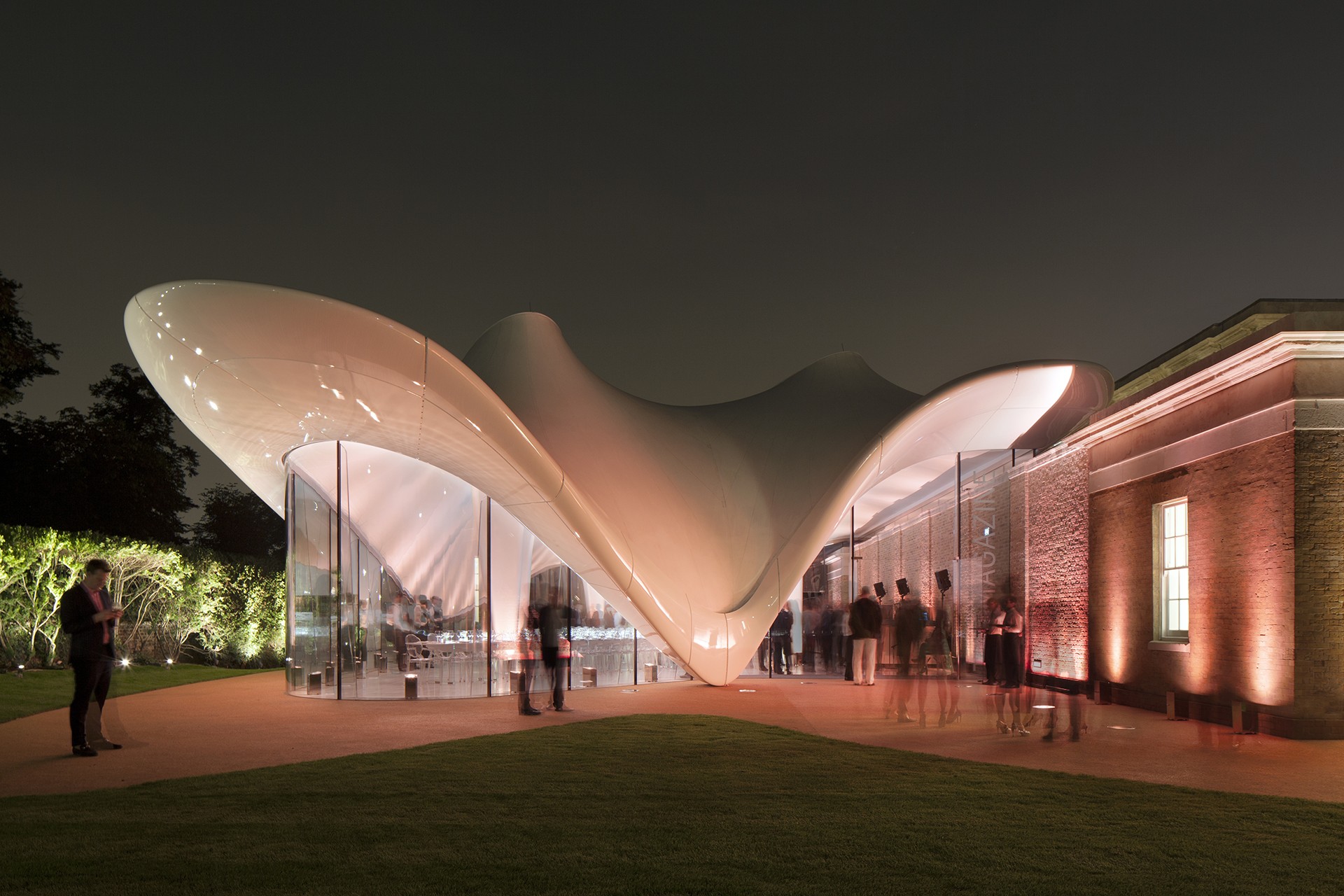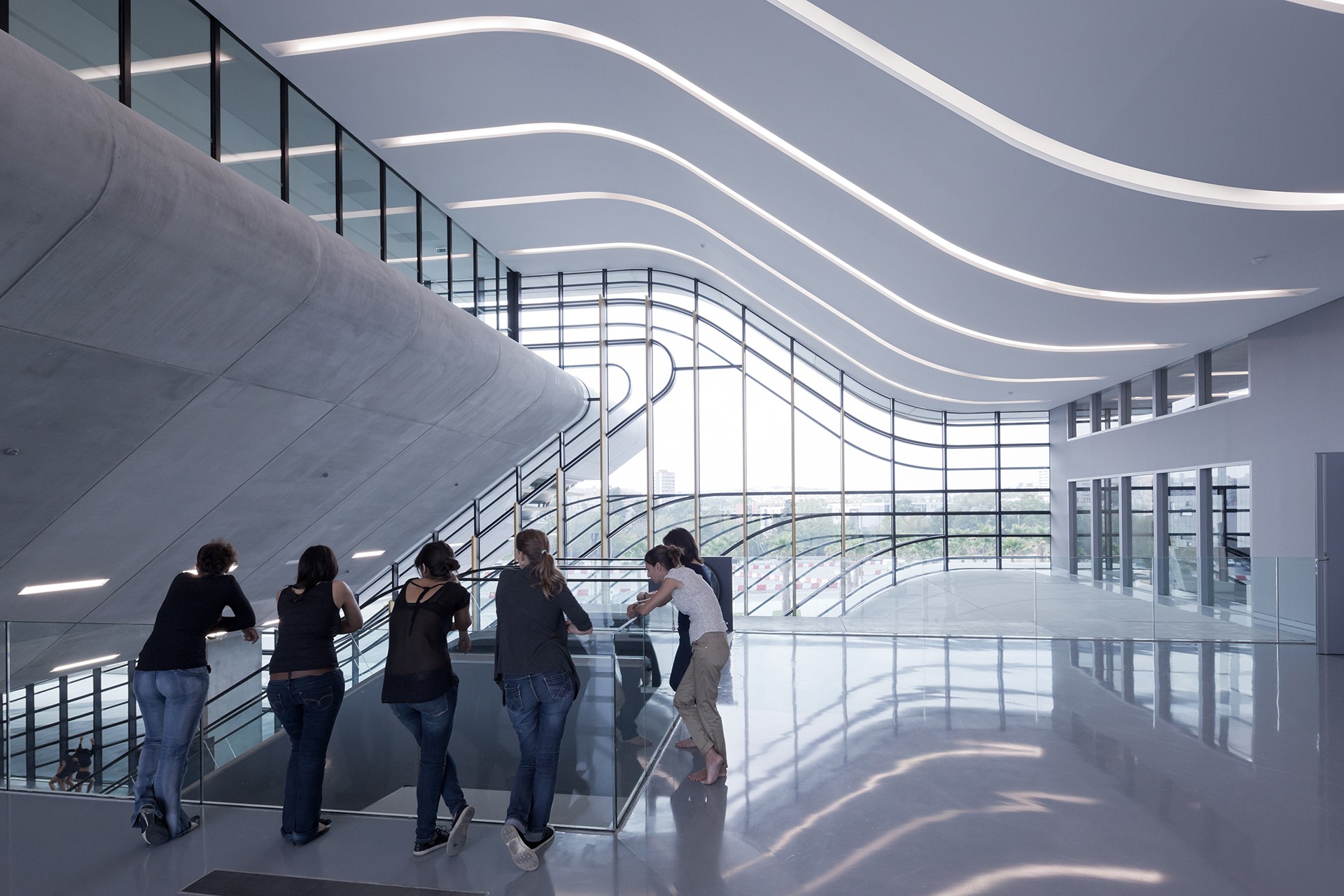
zaha hadid associates opens airport with world’s largest airport terminal in beijing.
beijing daxing international airport is a new airport in the daxing district 28/miles/46km south of the city center (20 minutes by express train).
developed to alleviate congestion at the capital’s existing airport, beijing daxing will be a major transport hub for the region with the world’s fastest growing demand for international travel and is fully integrated within the country’s expanding transport network.
initially serving 45 million passengers per year, the airport will accommodate 72 million travelers by 2025 and is planned for further expansion to serve up to 100 million passengers and 4 million tons of cargo annually.
beijing daxing’s 7.5 million square feet/700,000 square meters passenger terminal includes an 861,000 square feet/80,000 square meter ground transportation center offering direct connections to beijing, the national high-speed rail network and local train services, providing a catalyst for economic development in tianjin and hebei province.
[ zha official project description ] recently assigned the airport code ‘pkx’ by the international air transport association, beijing daxing sets a new standard in air transport services, serving the region’s growing population within a compact and efficient passenger terminal that is adaptable for future growth.
top > terminal hub / photo > nkchu // above> central courtyard / following photos courtesy of zha
echoing principles within traditional chinese architecture that organize interconnected spaces around a central courtyard, the terminal’s design guides all passengers seamlessly through the relevant departure, arrival or transfer zones towards the grand courtyard at its centre – a multi-layered meeting space at the heart of the terminal.
six flowing forms within the terminal’s vaulted roof reach to the ground to support the structure and bring natural light within, directing all passengers towards the central courtyard. natural light also enters the terminal via a network of linear skylights that provide an intuitive system of navigation throughout the building, guiding passengers to and from their departure gates.
structural spans of up to 100m create the terminal’s generous public spaces and allow the highest degree of flexibility for any future reconfiguration.
the compact radial design of the terminal allows a maximum number of aircraft to be parked directly at the terminal with minimum distances from the centre of the building, providing exceptional convenience for passengers and flexibility in operations. 79 gates with airbridges connect directly to the terminal which can rapidly process the passengers of six full a380 aircraft simultaneously.
five aircraft piers radiate directly from the terminal’s main central court where all passenger services and amenities are located, enabling passengers to walk the comparatively short distances through the airport without the need for automated shuttle trains. as a result, the terminal’s compact design minimizes distances between check-in and gate, as well as connections between gates for transferring passengers. this radial configuration ensures the farthest boarding gate can be accessed in a walking time of less than 8 minutes.
photovoltaic power generation is installed throughout the airport to provide a minimum capacity of at least 10mw. beijing daxing’s centralized heating with waste heat recovery is supported by a composite ground-source heat pump system incorporating a concentrated energy supply area of nearly 2.5 million m2.
the airport also implements rainwater collection and a water management system that employs the natural storage, natural permeation and natural purification of up to 2.8 million cubic meters of water in new wetlands, lakes and streams to prevent flooding and counter the summer ‘heat island’ effect on the local microclimate.
[ project credits ]
client > beijing new airport construction headquarters
architects/joint design team > zaha hadid architects (zha) and adp ingeniérie (adpi)
design (zha) > zaha hadid, patrik schumacher
project directors (zha) > cristiano ceccato, charles walker, mouzhan majidi
project design director (zha) > paulo flores
project architect (zha) > lydia kim
project coordination (zha) > eugene leung, shao-wei huang
project team (zha) > uli blum, antonio monserrat, alberto moletto, sophie davison, carolina lopez-blanco, shaun farrell, junyi wang, ermis chalvatzis, rafael contreras, michael grau, fernando poucell, gerry cruz, filipa gomez, kyla farrell, natassa lianou, teoman ayas, peter logan, yun zhang, karoly markos, irene guerra
beijing team (zha) > satoshi ohashi, rita lee, yang jingwen, lillie liu, juan liu
local design institutes > biad (beijing institute of architecture & design) + cacc (china airport construction company)
consortium team (competition stage) > pascall + watson, burohappold engineering, mott macdonald, ec harris consultants, mckinsey & company, dunnett craven, triagonal, logplan, sensing places, spada
[ consultants ]
security system + baggage systems design > china ippr international engineering co
information and weak power systems design > china electronics engineering design institute + civil aviation electronic technology co
high speed rail design > the third rail survey and design institute group corporation
subway design > beijing city construction design research general institute co
viaduct/bridge design > beijing general municipal engineering design & research institute co
fire performance design > arup
public art > central academy of fine arts
green technology > beijing tsinghua tongheng urban planning and design institute
bim design > dtree ltd.
architecture facade > xinshan curtainwall + beijing institute of architectural design (group) co –complex structure division
metro system > lea+elliott
lighting > gala lighting design studio
identification/signage system > east sign design & engineering co
landscape > beijing institute of architectural design (biad) landscape design division



